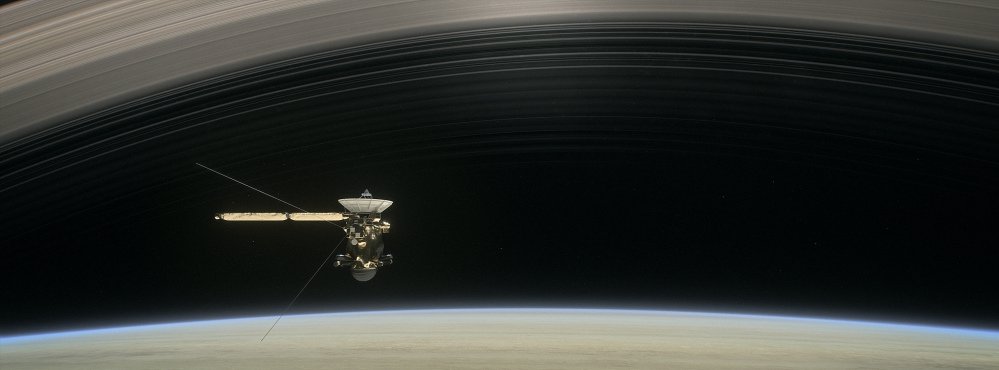CAPE CANAVERAL, Fla. — NASA’s Cassini spacecraft faces one last perilous adventure around Saturn.
Cassini swings past Saturn’s mega moon Titan early Saturday for a gravity-assisted, orbit-tweaking nudge.
“That last kiss goodbye,” as project manager Earl Maize calls it, will push Cassini onto a path no spacecraft has gone before – into the gap between Saturn and its rings. It’s treacherous territory. A particle from the rings – even as small as a speck of sand – could cripple Cassini, given its velocity.
Cassini will make its first pass through the relatively narrow gap Wednesday. Twenty-two crossings are planned, about one a week, until September, when Cassini goes in and never comes out, vaporizing in Saturn’s atmosphere.
Launched in 1997, Cassini reached Saturn in 2004 and has been exploring it from orbit ever since. Its European traveling companion, Huygens, landed on Titan in 2005. Cassini’s fuel tank is practically empty, so with little left to lose, NASA has opted for a risky, but science-rich grand finale.
“What a spectacular end to a spectacular mission,” said Jim Green, NASA’s planetary science division director. “I feel a little sad in many ways that Cassini’s discoveries will end. But I’m also quite optimistic that we’re going to discover some new and really exciting science as we probe the region we’ve never probed before.”
There’s no turning back once Cassini flies past Titan, Maize said. The spacecraft Wednesday will hurtle through the 1,200-mile-wide gap between Saturn’s atmosphere and its rings, at a breakneck 70,000-plus mph.
From a navigation standpoint, “this is an easy shot,” Maize said. The operation will be run from NASA’s Jet Propulsion Laboratory in Pasadena, California. The concern is whether computer models of Saturn’s rings are accurate. On a few of the crossings, Cassini is “kind of flirting with the edge of where we think it’s safe,” he said.
For at least the first trip through the gap, Cassini’s big dish antenna will face forward to shield the science instruments from any ring particles that might be lurking there. A couple of instruments will provide a quick rundown on the dust situation.
Scientists anticipate lots of lightweight impacts as the spacecraft goes through extremely small material, more like smoke than distinct particles. Material from the innermost D ring – which is slowly extending into Saturn – should be diffuse enough “that we should be fine,” Maize said.
Send questions/comments to the editors.



Success. Please wait for the page to reload. If the page does not reload within 5 seconds, please refresh the page.
Enter your email and password to access comments.
Hi, to comment on stories you must . This profile is in addition to your subscription and website login.
Already have a commenting profile? .
Invalid username/password.
Please check your email to confirm and complete your registration.
Only subscribers are eligible to post comments. Please subscribe or login first for digital access. Here’s why.
Use the form below to reset your password. When you've submitted your account email, we will send an email with a reset code.